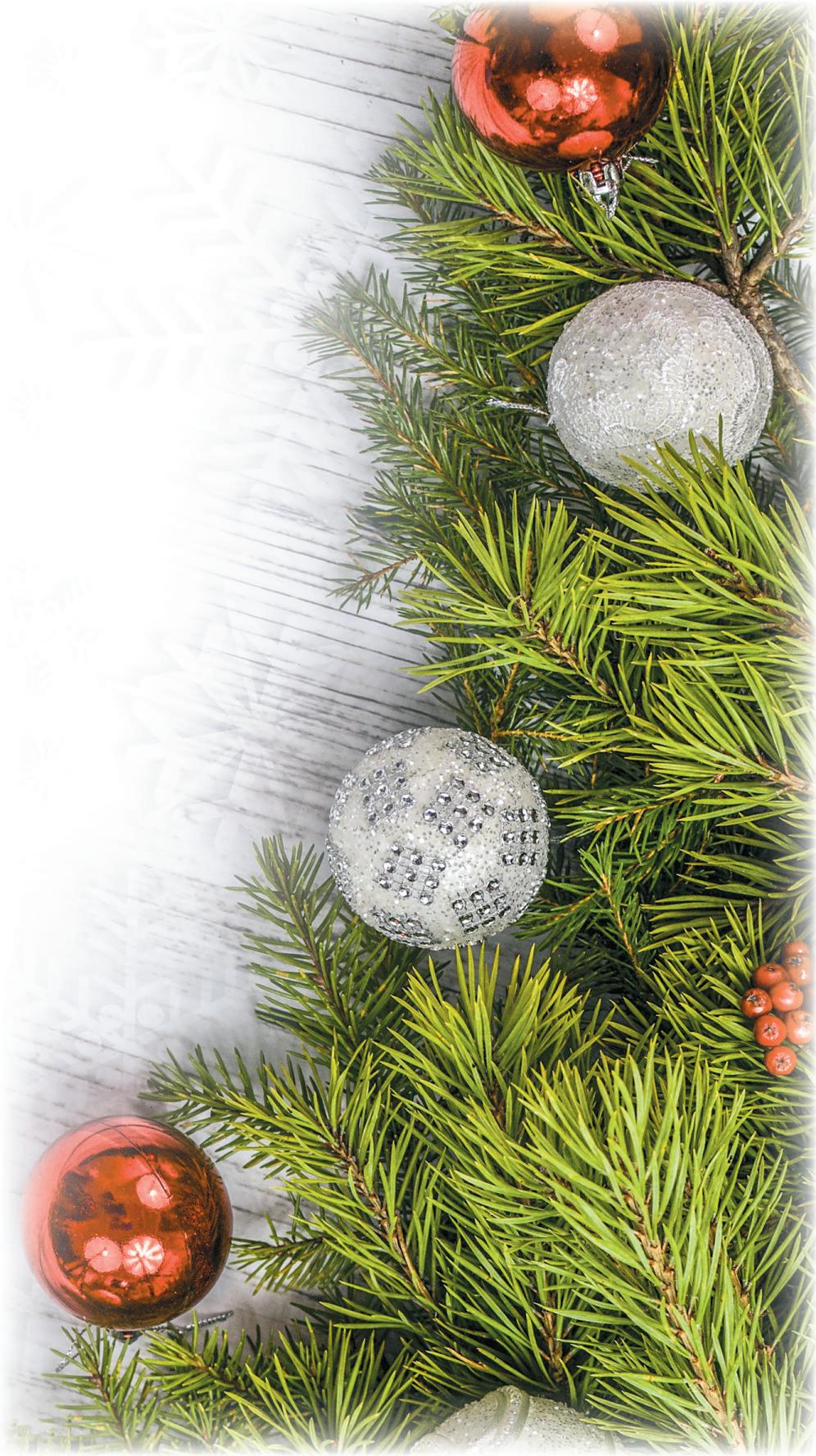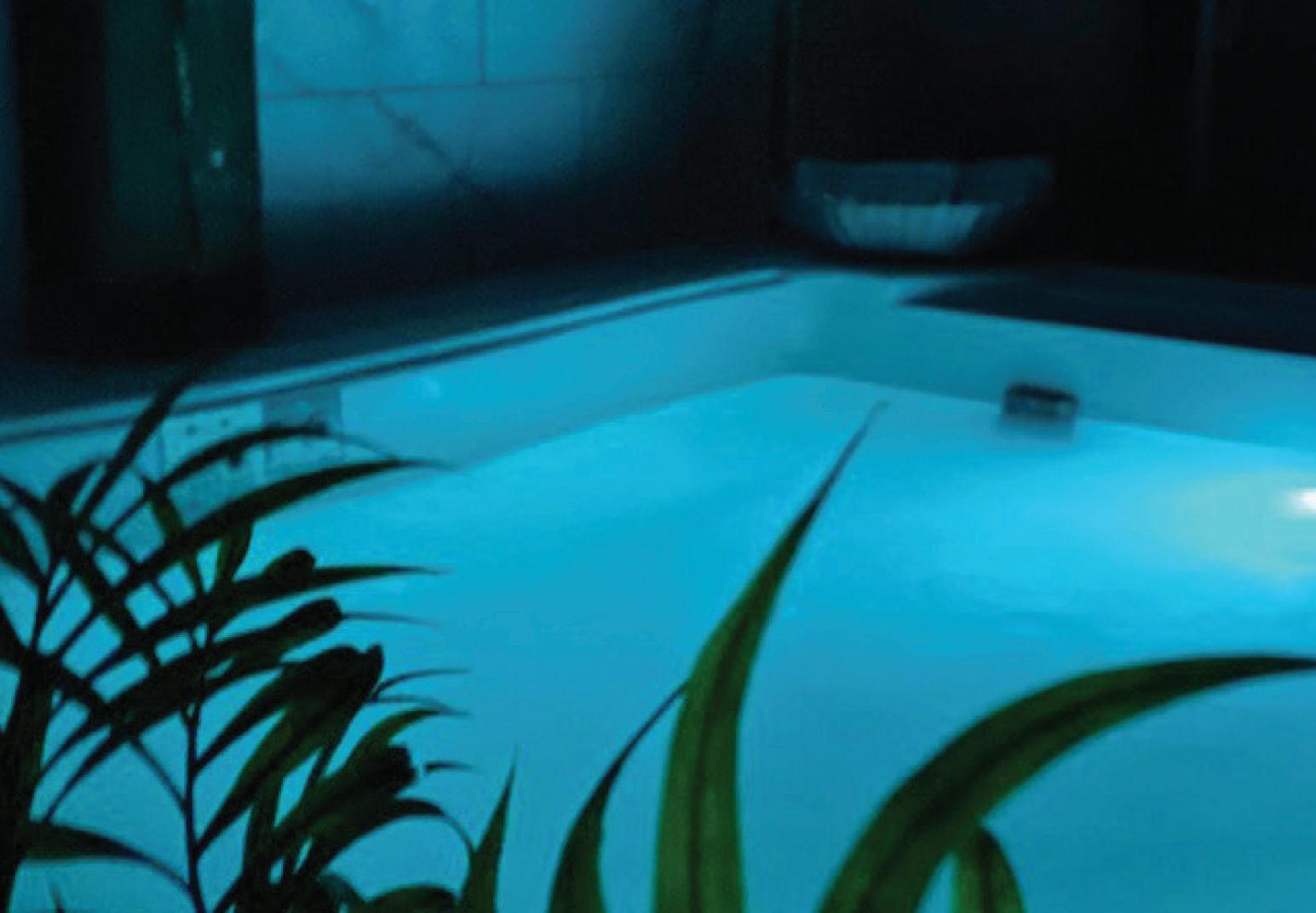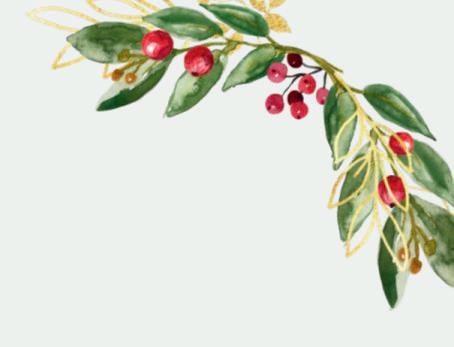






















Get ready to be enchanted this holiday season as Jimmy Stanton, the visionary behind Stanton Home Furnishings (SHF), takes center stage in Madison's Christmas Tour of Homes. This exclusive journey offers ticket holders a once-in-a-lifetime opportunity to immerse themselves in the timeless beauty of the Honeymoon 1851 Mansion alongside 11 other preserved historic homes, all bedecked in their festive splendor.
With meticulous months of planning and preparation, Stanton promises an extraordinary experience, seamlessly fusing the history of the Honeymoon 1851 Mansion with the opulence that defines SHF. For all who step through his home’s doors, an unforgettable blend of historic allure and modern luxury awaits.
In a thrilling development for luxury home decor enthusiasts, SHF has expanded its horizons, offering an even more extensive collection of high-end furnishings. The newly expanded building boasts an even wider array of luxury furnishings, catering to every corner of your home. Whether you're seeking to revamp your bedroom, elevate your living room, remodel your dining room or transform your patio into an oasis of relaxation, Stanton Home Furnishings has it all. Situated in the heart of Madison, this local gem has become synonymous with elegance, quality, and timeless style.
Stanton Home Furnishings has also established a presence at Madison Markets, nestled in the downtown Madison. You can now experience a curated selection of their finest offerings in this charming marketplace. It's the perfect opportunity to get a taste of SHF's elegance before exploring their grand showroom.


Stanton Home Furnishings' recent expansion is a testament to their commitment to delivering the finest in luxury home decor to the Madison community. With their custom upholstery options, in-house interior designers, presence at Madison Markets, and upcoming participation in the Madison’s Christmas Tour of Homes, SHF continues to be a beacon of style and sophistication in Madison, Georgia. Don't miss the chance to explore their expanded showroom and witness the magic of their offerings. Your dream home awaits at Stanton Home Furnishings. SPONSORED CONTENT
Thank you for joining us on this wonderful journey through Madison’s captivating homes as we kick off the Christmas Season together.
This Tour of Homes has been a labor of love and could not have happened without the many volunteers who gave of time and energy to make this the best event ever. I am appreciative of the help and want to especially thank Stephanie Donelson and Linda Glover for the endless hours behind the scenes.
As the 2023 Sponsor of Madison’s Christmas Tour of Homes, the Morgan County Historical Society aims to bring to life for you the rich history found in our charming town.
Thank you for coming, and when you head back to your own town, or remain to call Madison your home, may you leave with a new energy for all that is dazzling, festive, and representative of what is truly good in this world.
Be blessed.
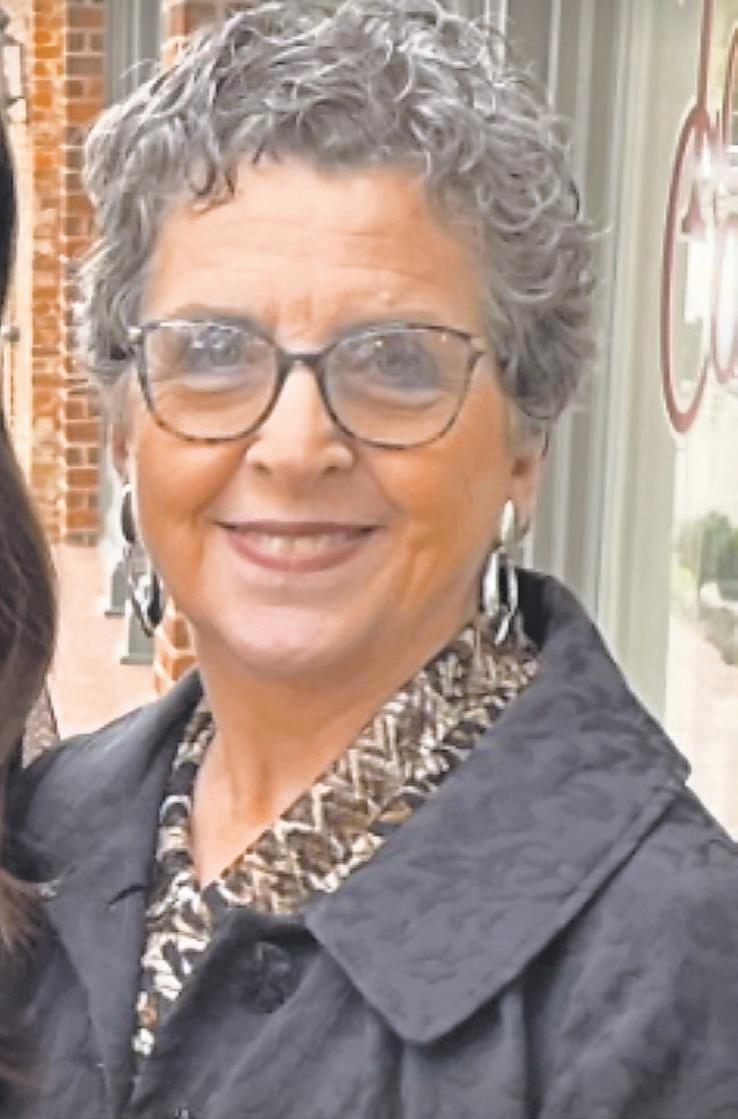
Sara Lynn Holbert Chairman
of the 2023 Madison’s Christmas Tour of Homes
Amelia’s Apparel & Accessories pg 11
Bank of Madison pg 31
Barkin’ Dogs Shoe Company pg 15
BB&G pg 5, 27
Bells of North Georgia pg 38
Edward Jones pg 39
Blu Boutique pg 19
Breco Realty pg 33, 37
Jack’s Creek Farm pg 23
Keller Williams pg 41

Madison Markets pg 21
Madison-Morgan Cultural Center pg 45
Madison Realty pg 48
Madison Square Collection pg 35
Morgan County Historical Society pg 7
Spa Medical pg 43
Stanton Home Furnishings pgs 2-3
United Bank pg 29
Zeb Grant Design pg 9
Zen Relaxing Wellness Center pg 47
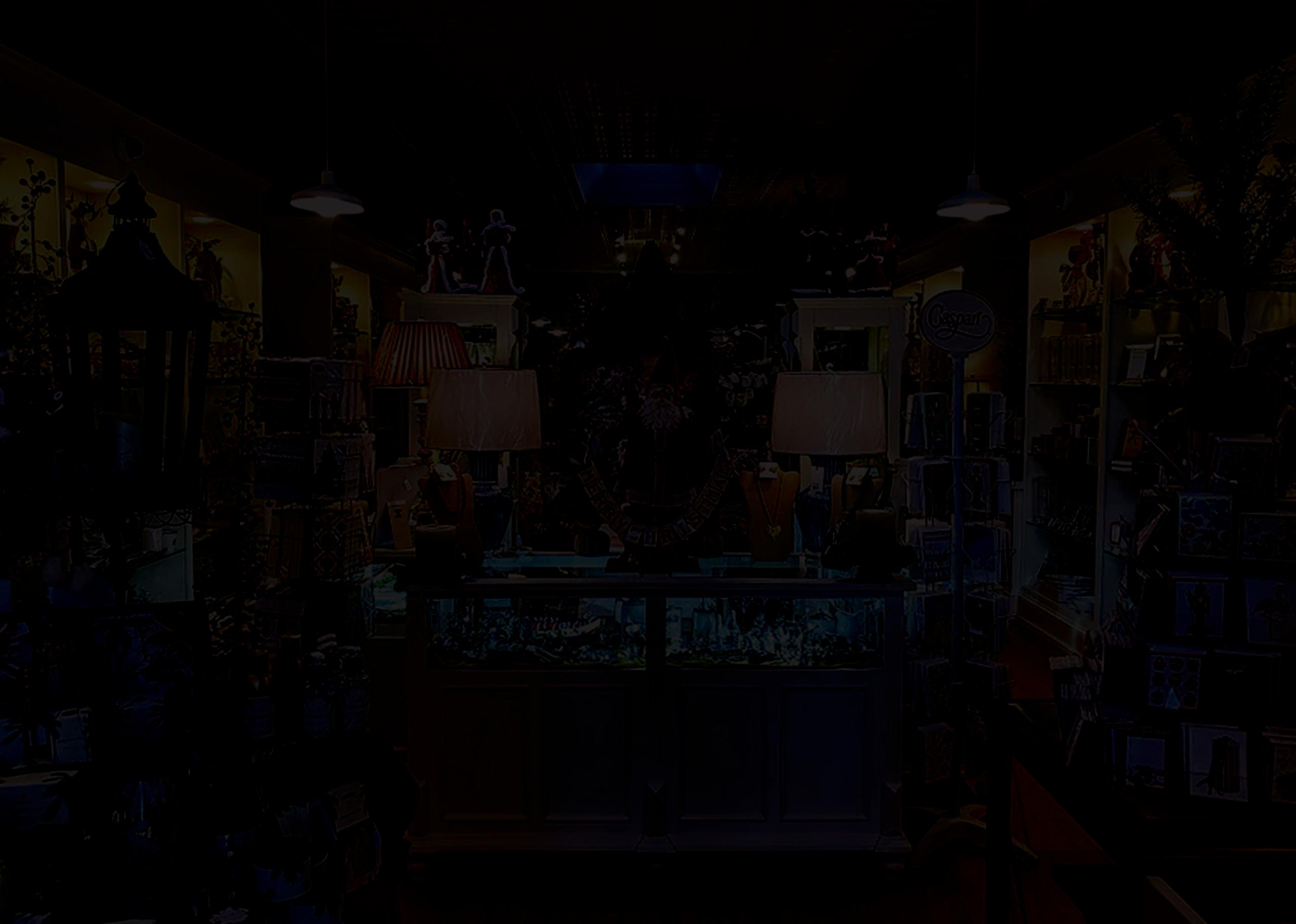







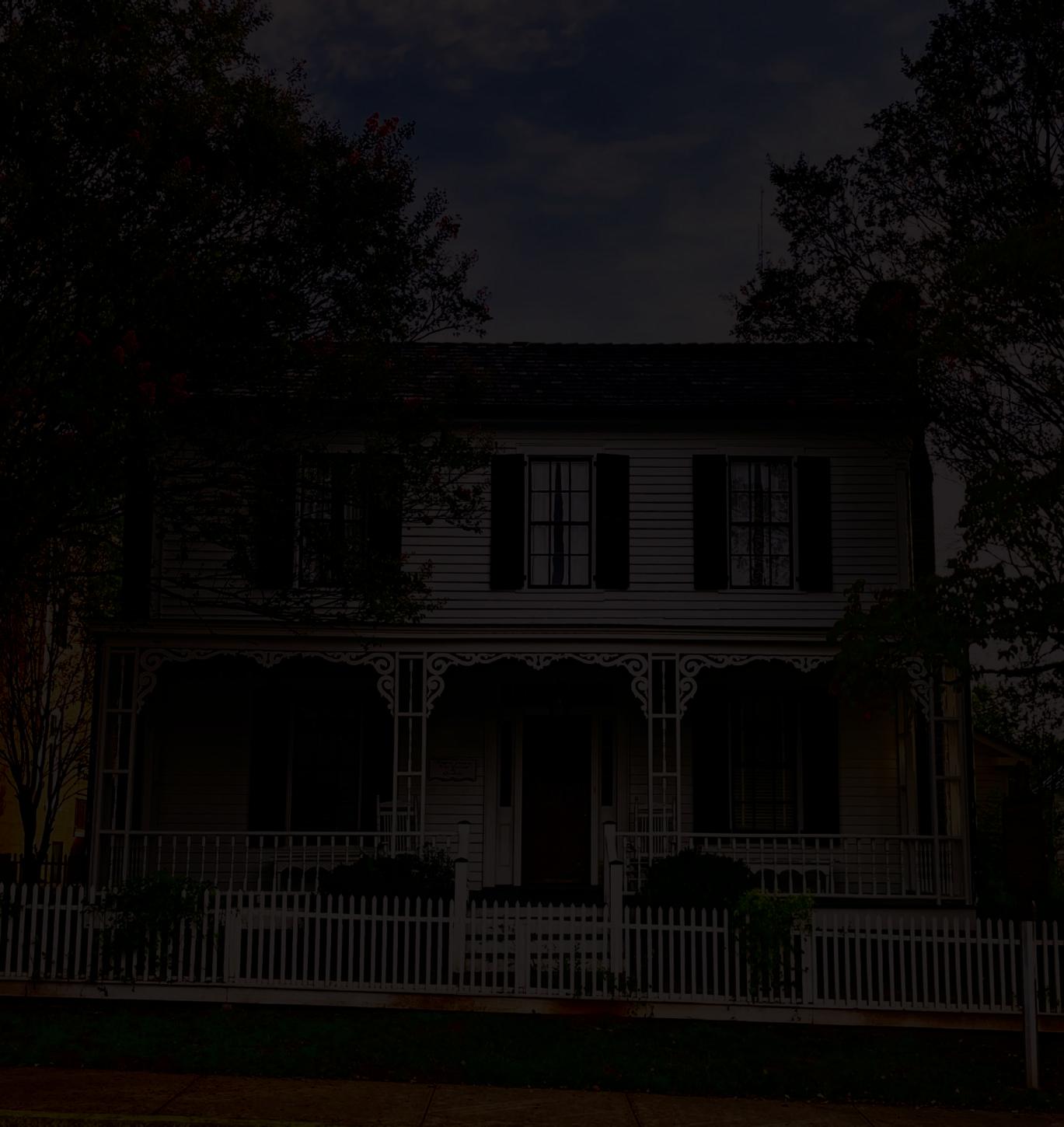



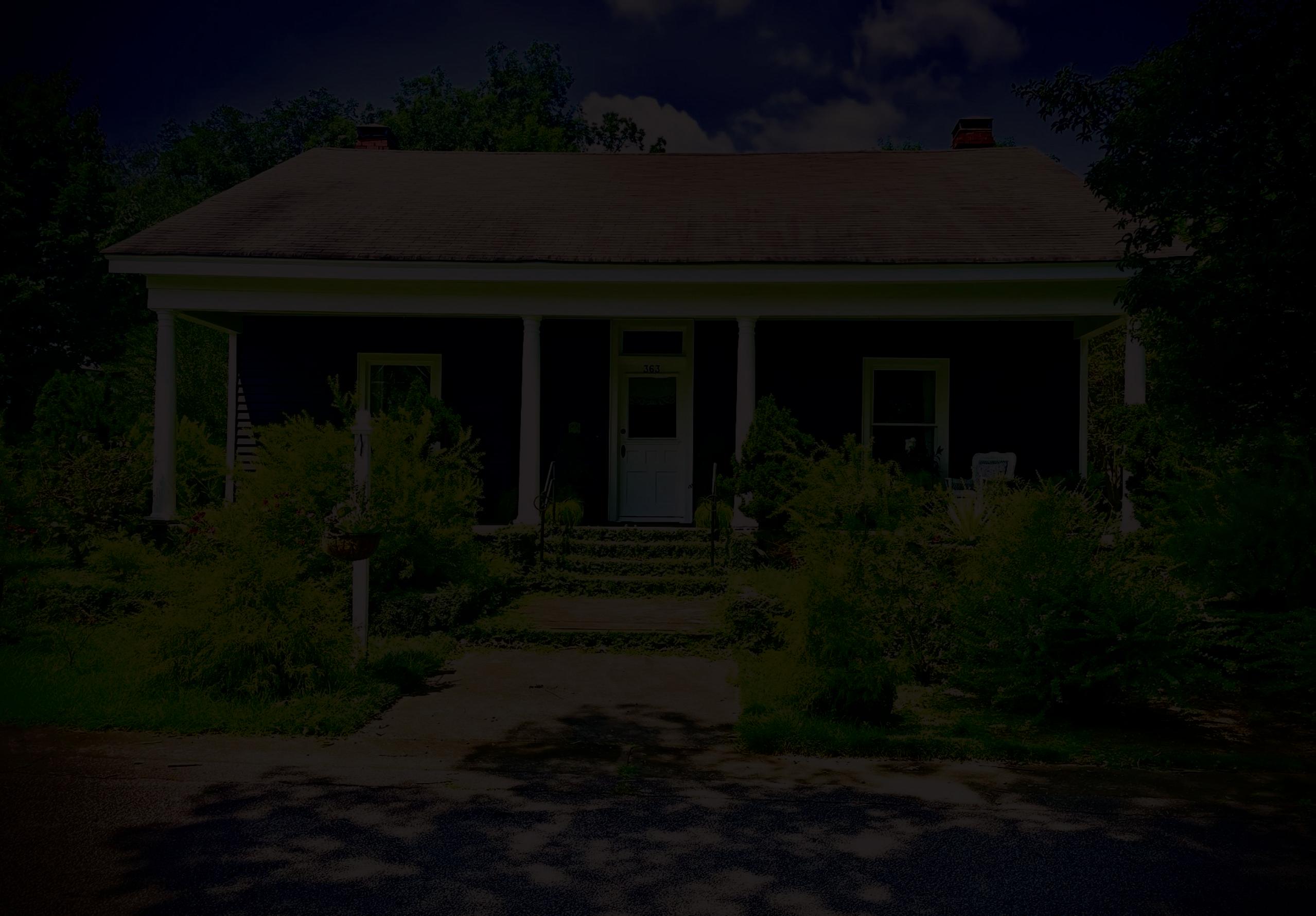








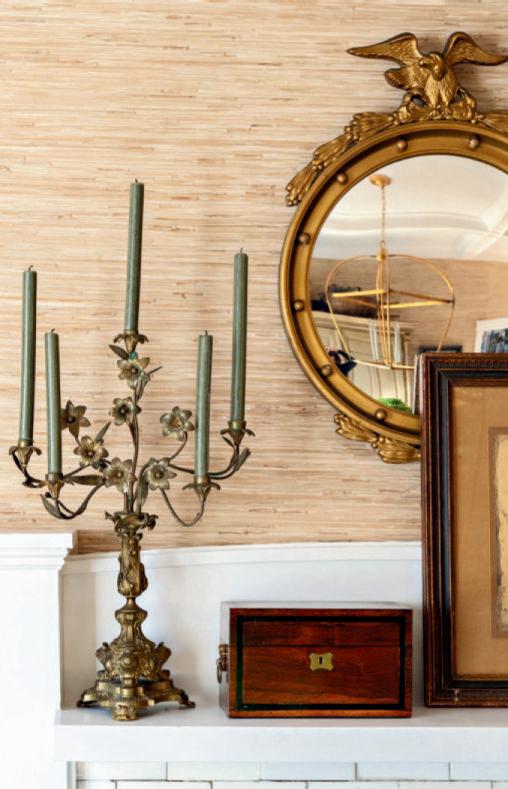











From 12
teams of horses and mules to its present site. The front of the home originally faced
Central Avenue. Mrs. Fletcher Manley (Sue Reid Walton) purchased the home in 1946 and returned it to its grace and elegance.
Known as “Madison’s First Lady,” she was the last resident of the home. As owner,
she hosted many parties, receptions, and weddings. She was a philanthropist and graciously supported churches, education, and the City of Madison. Mrs. Manley’s only grandchild, who married in the front
parlor, donated the home to the Morgan County Historical Society, Inc. in 1977.
The Jones-Turnell-Manley home is now operated as a house museum, Heritage Hall. It has been restored to its architectural and histori-
cal significance. Period furnishings provide an elegant setting for public and private functions.
The Morgan County Historical Society is the proud sponsor of Madison’s Christmas Tour 2023.
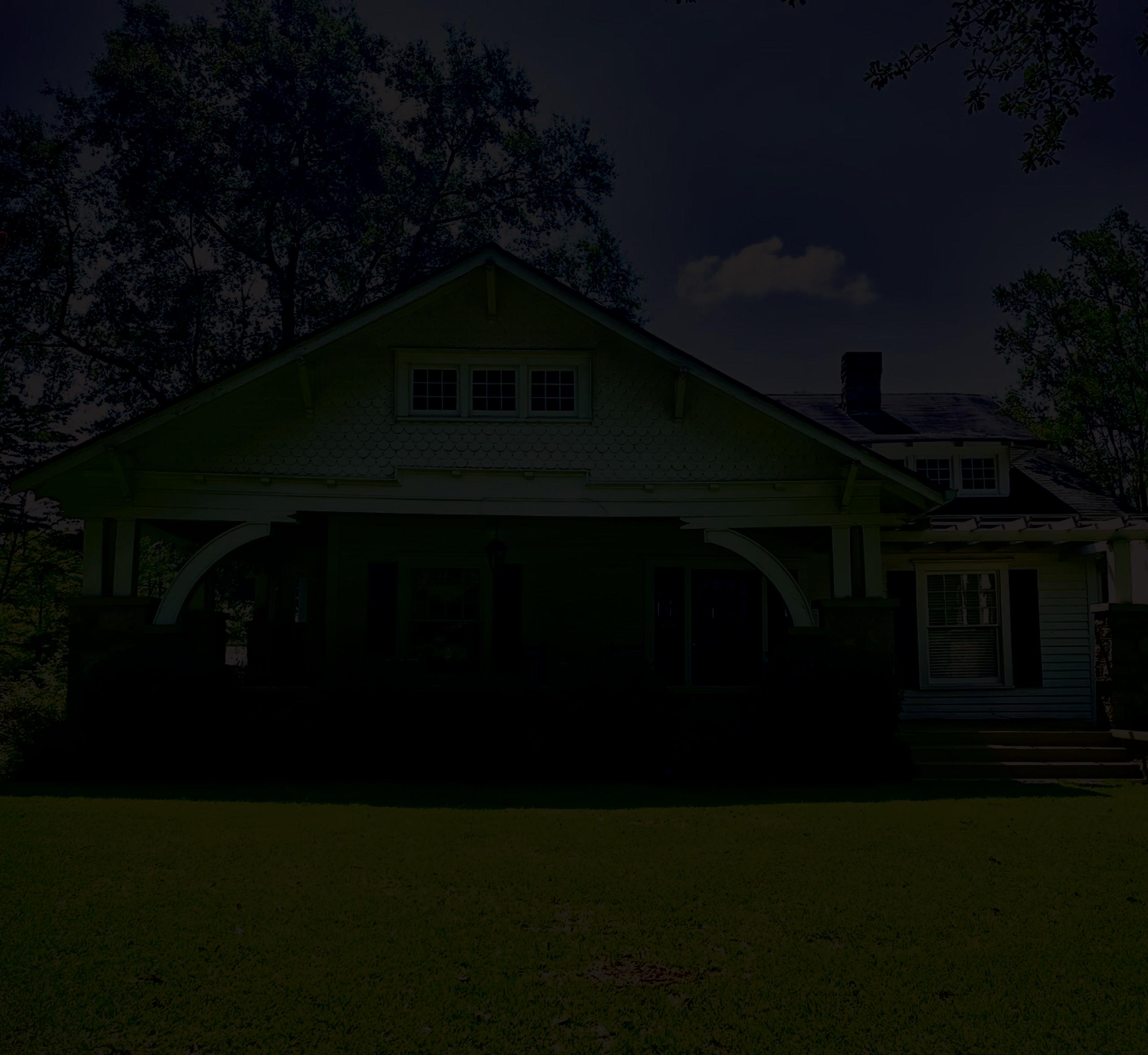



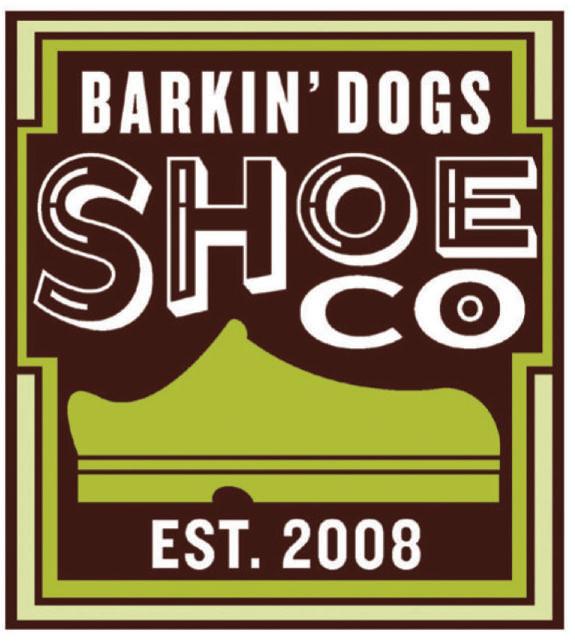





From 16
been open porches that were later enclosed.
As owner of Stanton Home Furnishings in Madison, Stanton has transformed the iconic home into a veritable showroom, mixing his signature traditional and modern style. While most of the furnishings, lighting, art, and décor
have been culled from Jimmy’s Stanton Home Furnishings store in Madison, Stanton mixed in family heirlooms and antique pieces.
Upon entering, an ornate wooden staircase winds across three walls of the foyer, leading to the upstairs bedrooms. Stanton chose an inviting blue for the walls inspired by one of Stanton’s favorite movies, “Grey Gardens.” On either side of the entry are two identical parlors, and for these rooms, Stanton chose to depict “night and day,” painting one room a rich black and


the other a soft khaki. For Madison’s Christmas Tour of Homes, the rooms are decking the halls as they are decorated with holly greenery, festive decor, and Christmas trees.
All the light fixtures are modern except for the chandelier in the front north bedroom, which had previously hung in the dining room. Stanton and Greco also revitalized the landscaping and saved the early 20th-century outbuildings, including the garage/potting shed, which was transformed into a pool house.









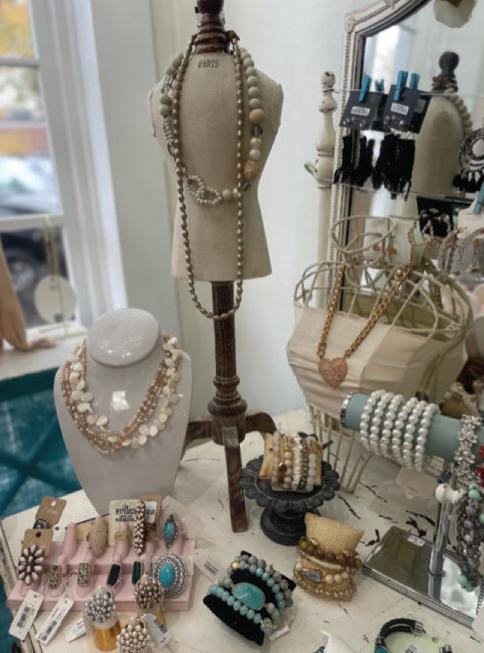









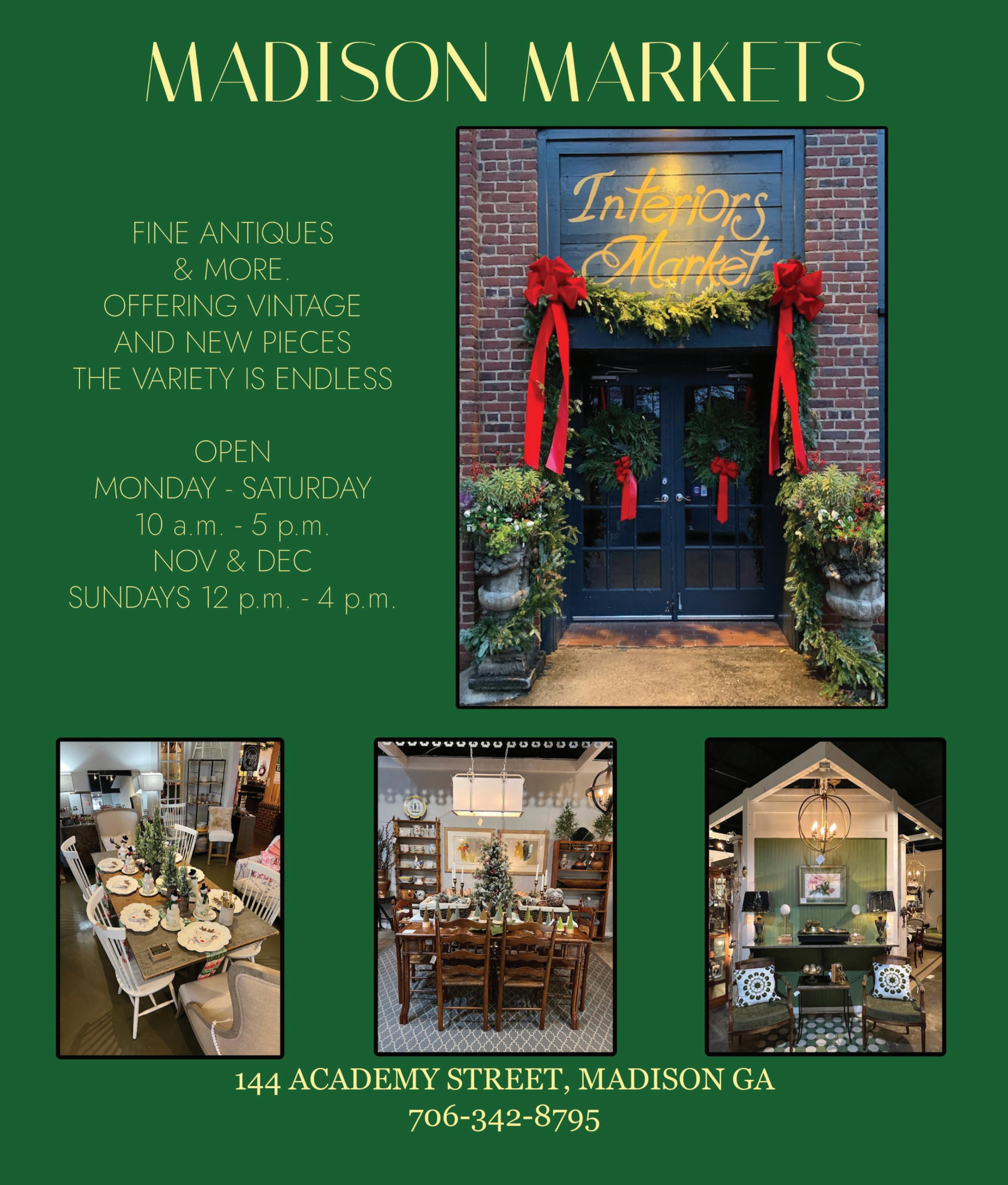





DAY TOUR
1. ROGERS HOUSE (pg 6)
179 E. Jefferson St.
2. ROSE COTTAGE (pg 6)
179 E. Jefferson St.
3. PLUM STREET (pg 8)
262 Plum St.
4. THE OAKS (pg 10)
2550 Bethany Road
5. HERITAGE HALL (pg 12)
277 S. Main St.
6. POOL HOUSE (pg 14)
660 S. Main St.
7. HONEYMOON 1851 MANSION (pg 16)
928 Eatonton Hwy.
8. WALTON’S WHITE LILY (pg 18)
921 S. Main St.
9. KIMBLE-CRAWLEY-DAVIS HOUSE (pg 20)
670 Dixie Ave.
10. CYRUS BILLINGSLEA BARROW HOUSE (pg 22)
420 Porter St.
11. HILL-BALDWIN-HUGGINS HOUSE (pg 26)
485 Old Post Road
CANDLELIGHT TOUR
1. ROGERS HOUSE (pg 6)
179 E. Jefferson St.
2. ROSE COTTAGE (pg 6)
179 E. Jefferson St.
5. HERITAGE HALL (pg 12)
277 S. Main St.
7. HONEYMOON 1851 MANSION (pg 16)
928 Eatonton Hwy.
8. WALTON-HARDEN HOUSE (pg 18)
921 S. Main St.
12. HILLTOP (pg 28)
543 N. Main St.
13. BOOKHAVEN/BOOKMAD (pg 30)
606 N. Main St.
14. COOPER HOUSE (pg 32)
273 E. Washington St.
15. E. WASHINGTON ST. (pg 34)
313 E. Washington St.
16. STOKES-McHENRY HOUSE
458 Old Post. Rd.



















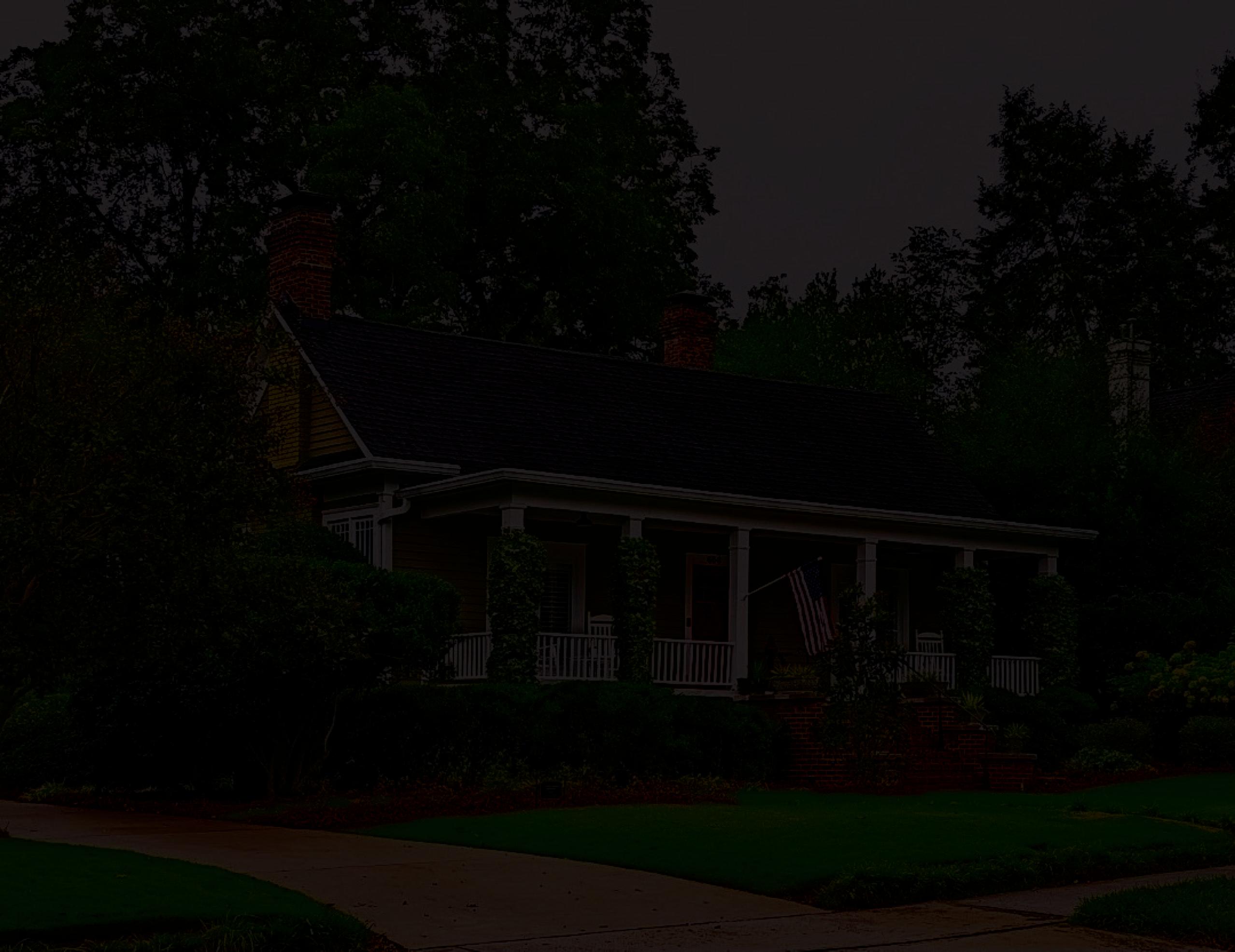





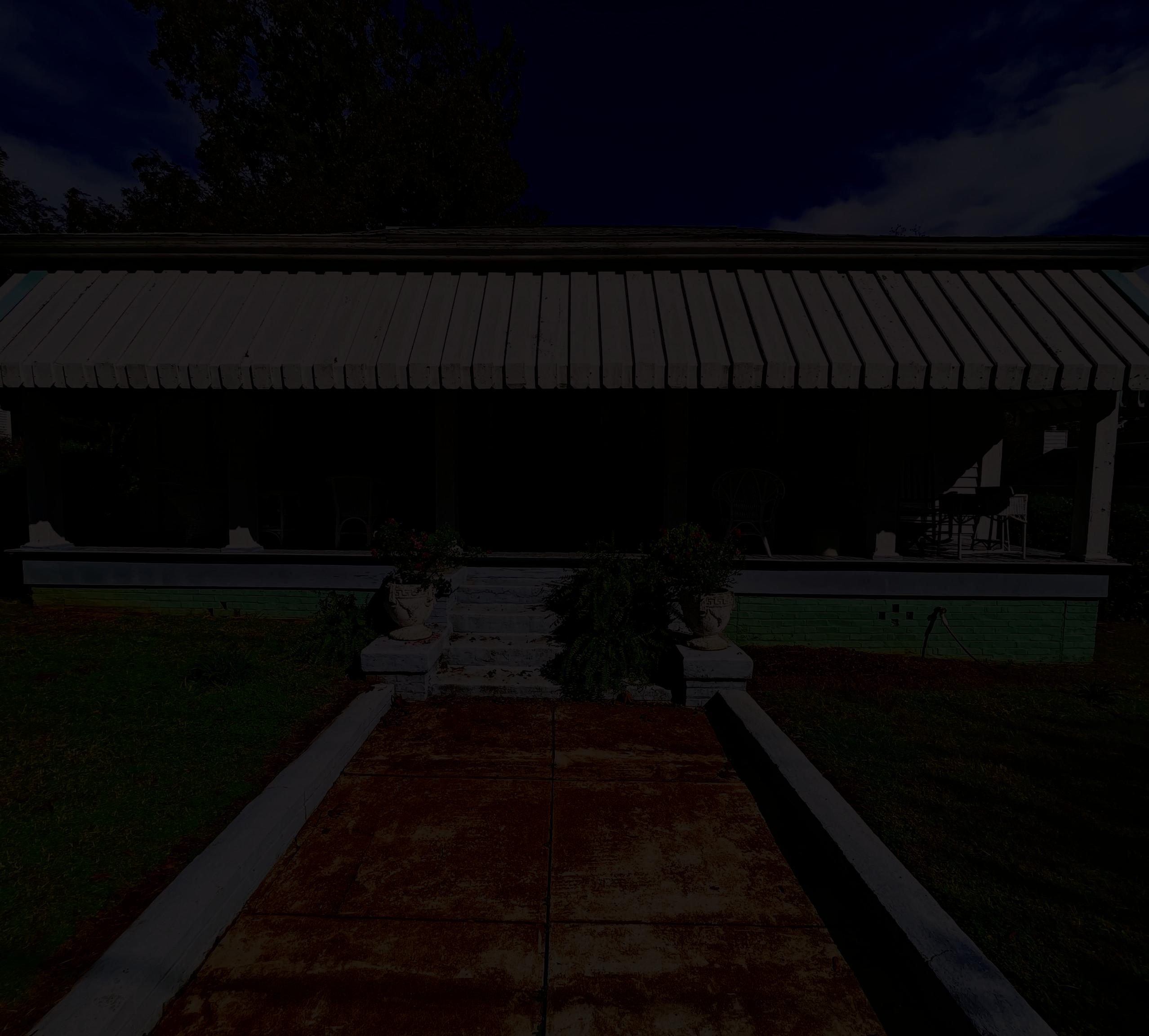













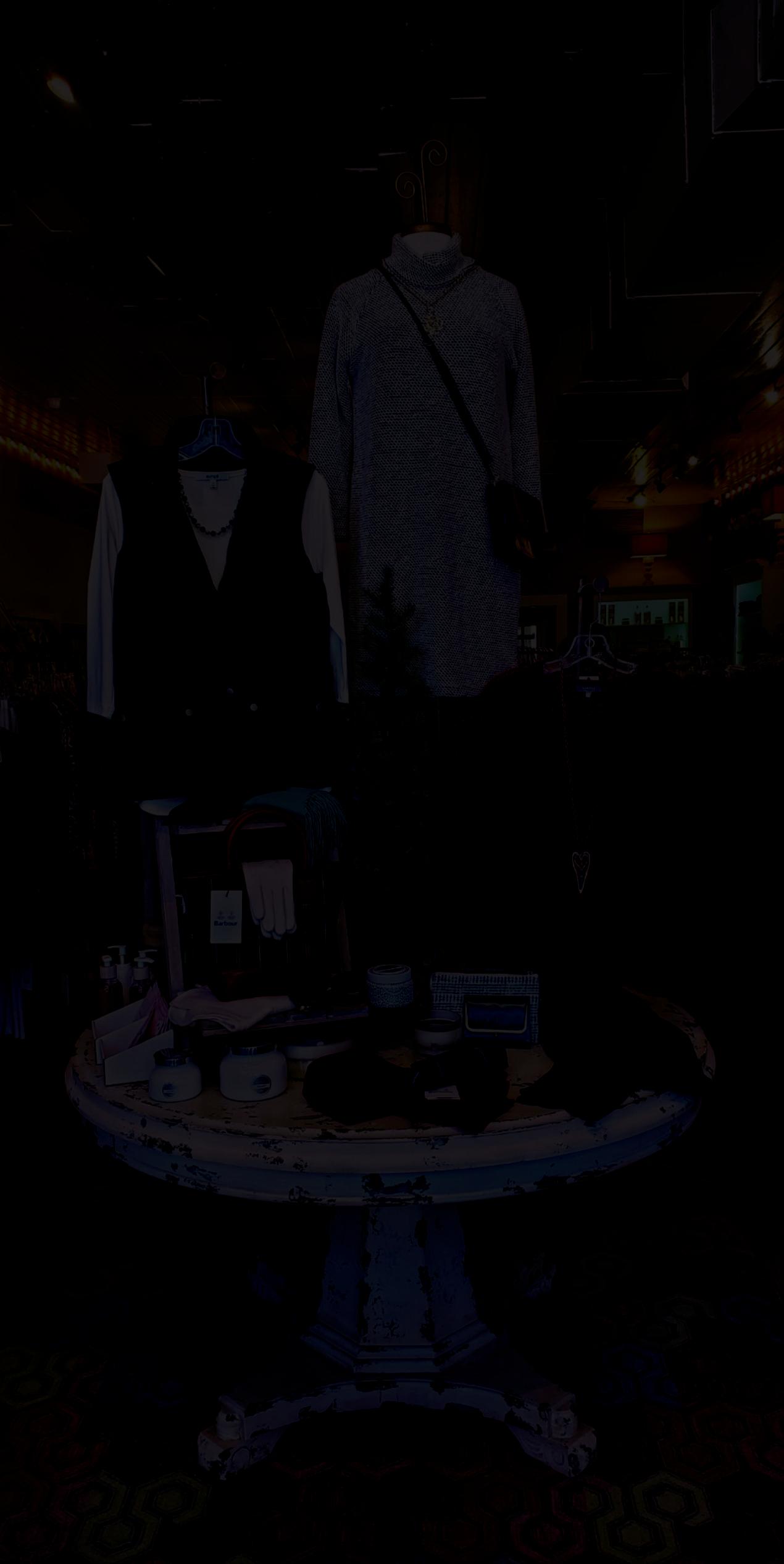
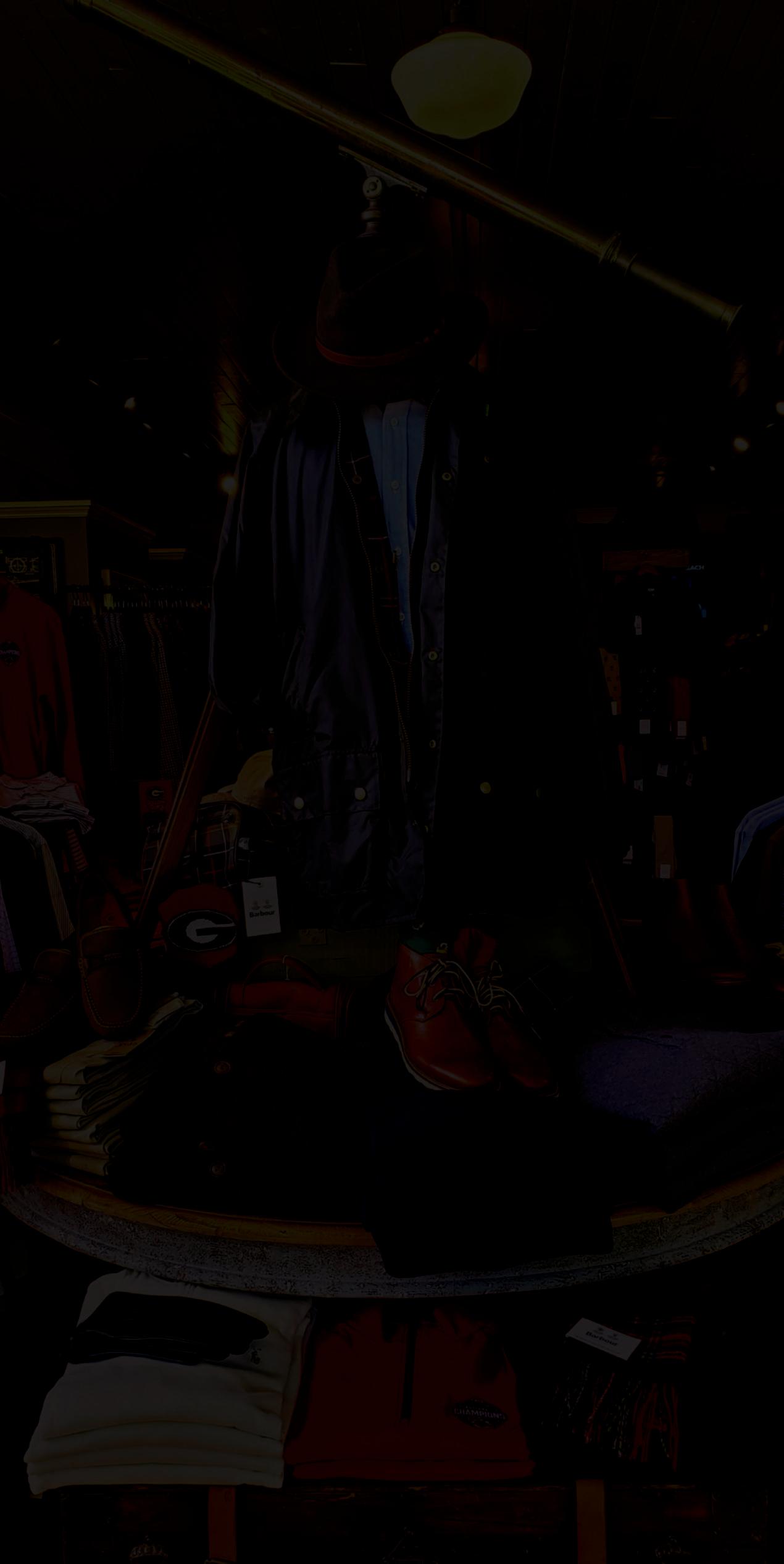






From 36
family resulted in the preservation of this home, furniture, and family correspondences. Because of this, the home won the 2016 Georgia Trust Preservation Award for Excellence in Stewardship.
After the Hicky family sold the home, they shared many of the lovely furnishings with the Morgan County Historical Society and the MadisonMorgan Cultural Center where their stories continue to be told.
Did you know Margaret Mitchell was once a guest in the home?


While you’re here, enjoy other historical highlights that Madison has to offer like area churches, cultural centers and museums. The following locations will be open for the day tour only and are within walking distance of Heritage Hall.
A: MADISON BAPTIST CHURCH, 328 S. Main St.
B: MADISON PRESBYTERIAN CHURCH, 382 S. Main St.
C: MADISON FIRST UNITED METHODIST CHURCH, 296 S. Main St.
D: CALVARY BAPTIST CHURCH, 184 Academy St.
E: CHURCH OF THE ADVENT, 338 Academy St.
F: AFRICAN AMERICAN MUSEUM, 156 Academy St.
G: MADISON-MORGAN CULTURAL CENTER, 434 S. Main St.

Presents Christmas classics at Madison Presbyterian Church on December 2nd.
Ringing times: 10:30, 11:30, 12:30, & 1:30
Open to the public, no tickets required.

The Madison Baptist congregation was organized in 1834, and by 1855 it was prosperous enough to erect the present structure, which probably was not fully finished until 1858. John Byne Walker of Bonar Hall was a leading layman of the congregation, and the building’s red bricks (stamped JBW) were manufactured by slaves in the brick works on his plantation. One of the church’s 20th century dedicated stained glass windows honors Walker. As was typical in antebellum southern Protestant churches, slaves attending services were confined to the designated gallery. Following emancipation, some freedmen who had attended Madi-
son Baptist were among the founders of Calvary Baptist Church on Academy Street. Although grand Greek Revival columns like those on the church’s façade are strongly associated with antebellum architecture, in fact, the ones currently gracing the church were not added until around the time of the First World War when Classical Revival was popular. Also, the current steeple is much modified from the original. The brick work and windows under the portico are, however, original to the building.
The interior of the sanctuary has, of course, been updated and redecorated, but it is still steeped in history.
382 South Main Street
Madison Presbyterian Circa 1842
382 South Main Street
The Presbyterians of Madison were already well organized by the mid 1820s, and in 1842, they built the elegant structure that still stands. The walls are stucco over masonry, which gives a formal appearance to the façade. The Doric pilasters that frame the three doors present the Greek Revival style without grandiose columns. Originally, the side windows were nine-over-nine panes like the three remaining on the front, but later they were replaced with the fine Tiffany-style stained glass windows one sees today, which were donated by a member in memory of her family. As in all three of Madison’s extant antebellum church buildings, there was a balcony for slaves — in this case
with an outside entrance.
Among the worshipers before the Civil War was Alexander H. Stephens, who would become Vice President of the Confederate States. During Madison’s brief occupation, the congregation’s silver communion service was taken by Union soldiers. Entreatments to the Union command resulted in the return of the treasured set, which is now on display in the museum of the Madison-Morgan Cultural Center, except when being used on special occasions by the congregation.
In the immediate post-Civil War period, the congregation was pastored by the Rev. I.S.K. Axson, father of Ellen, who lived with her parents on Porter Street. She would later become Woodrow Wilson’s wife and first lady of the nation until her tragic death from kidney disease in 1914.

As a business owner, you know people depend on you to help them save for retirement. And ofering the right business retirement plan can help you retain talented employees.
With Edward Jones, you’ve got options
I’ll help you understand the available plan options and determine which type of plan makes sense for your business. And if circumstances change? No need to worry. I’ll be there to help you adapt — and so will the entire Edward Jones team.
Our process? We listen. Really listen. Stop by.

As a business owner, you know people depend on you retirement. And offering the right business retirement talented employees. With Edward Jones, you’ve got options
I’ll help you understand the available plan options and plan makes sense for your business. And if circumstances worry. I’ll be there to help you adapt — and so will the
them save for retirement. And offering the right business retirement plan can help you retain talented employees.
With Edward Jones, you’ve got options

I’ll help you understand the available plan options and determine which type of plan makes sense for your business. And if circumstances change? No need to worry. I’ll be there to help you adapt — and so will the entire Edward Jones team.
First United Methodist Circa 1914
296 South Main Street
By the early 20th century the congregation of the First Methodist Episcopal Church, South had outgrown its Gothic building on Academy Street. (That original location is also on tour as the Episcopal Church of the Advent.)
A successful building campaign led to the construction in 1914 of a fine new building unlike any of the more traditional churches in town. The Akron Plan, popularized by the First Methodist Church of that Ohio city, featured a central auditorium surrounded by rooms for Sunday school and other functions. The plan remained
popular with churches of several Protestant denominations through the 1920s.
This elegant Madison example features a classical Greek cross design with the sanctuary situated under a large dome with a smaller cupola-like dome on top of that. The Main Street and Central Avenue façades of the church incorporate Roman Tuscan columns supporting ornamented pediments with broad entablatures. The Greek crosses embedded at the points of the pediments reflect the shape and purpose of the building.
The interior is equally dramatic. (In order to build the church, the house now known as Heritage Hall had to be turned and moved to its present location next door.)

Calvary Baptist Church Circa 1880 184 Academy Street
In 1873 the congregation of Calvary Baptist Church, composed mostly of recently freed slaves, purchased a lot and began construction of a substantial brick building in a Gothic style quite similar to the white Methodist church (now Episcopal) just three blocks south on Academy Street. Congregants including masons, carpenters, and general laborers performed most of the construction work in their off time. Around 1880 the work was finally done. At about the same time, the
Saint Paul’s African Methodist Episcopal building was taking shape in similar brick style across the railroad tracks at 811 Fifth Street. It is safe to assume that the black Baptists and the AME brethren shared construction tips and experience.
The brick detailing on the front of Calvary Baptist suggests a unified tower rising all the way to the steeple with its ornate Italianate detailing. Brick arches with keystone effect accent the front windows, and pilasters at the corners give the impression of substantial construction. Major restoration was undertaken in the mid-1970s.











The Episcopal Church of the Advent Circa 1842
338 Academy Street
This Gothic-influenced house of worship, now the Episcopal Church of the Advent, was originally erected by Madison’s Methodists. It served that congregation for 70 years until they outgrew the small building and moved into their new church building on South Main Street.
After the Methodists vacated, various groups used the structure, including Christian Scientists in the 1950s. Episcopalians first formally organized in Madison in 1846, and among the founding vestrymen was Joshua Hill, later to become a U.S. congressman and senator.
The small parish had several buildings over the years. Their first per -
manent building, a simple wooden chapel built in 1853 and demolished in the 20th century, was located near the city cemetery.
The popular 19th century Gothic Revival style that the Methodist builders employed in 1844 is most evident in the pointed arch windows and in the brick pilasters on the sides that suggest the buttresses of medieval cathedrals. The gables of the steeple carry through the gothic theme, as does the rounded apse at the rear of the sanctuary. The balcony now used by the choir provided seating for slaves prior to emancipation.
After the Episcopalians acquired the building in the 1960s, they refreshed the exterior, made critical structural repairs and refurbished the interior to suggest the classic Anglican/Episcopal edifices typical of the low country south.

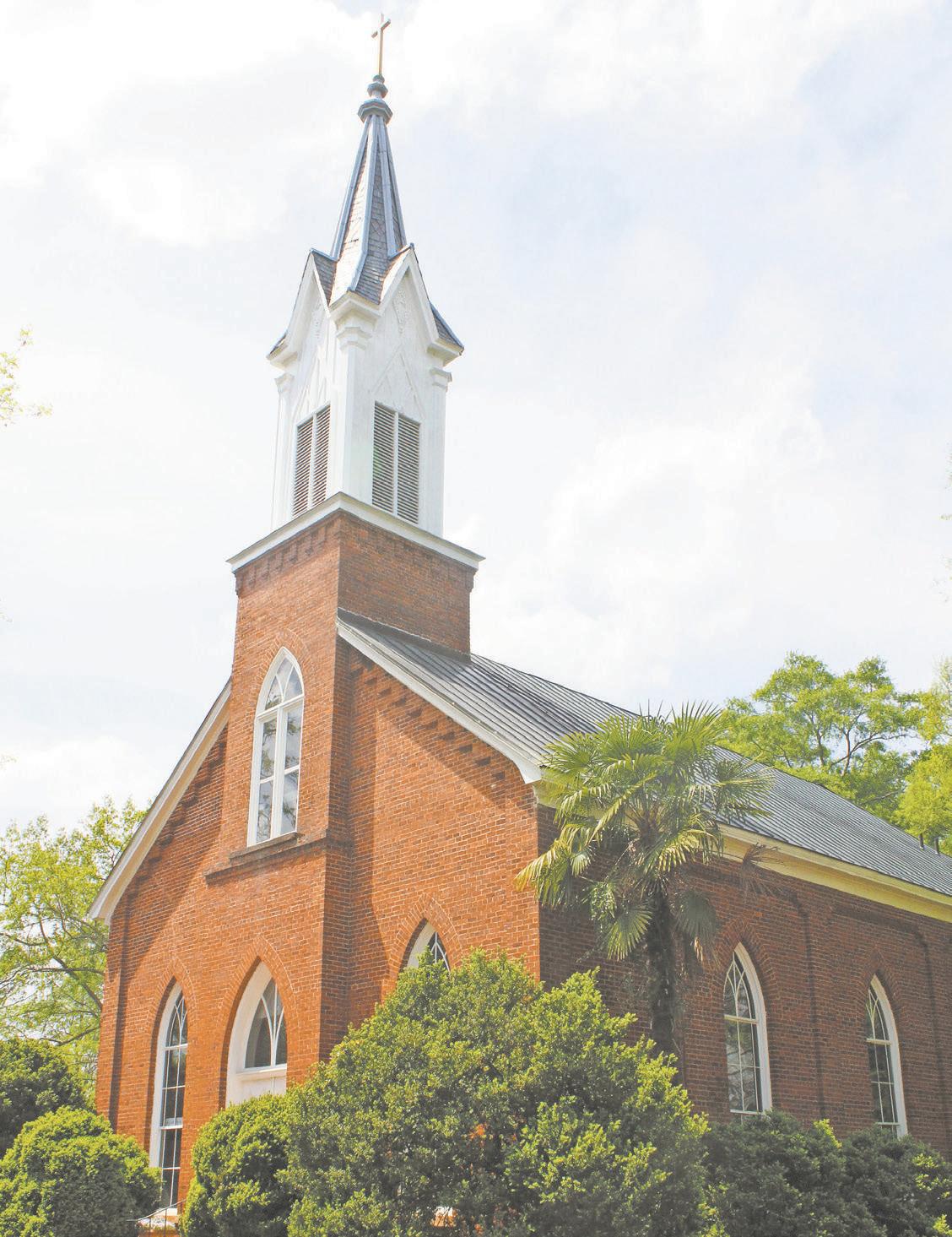
African-American Museum Circa 1895
156 Academy Street
The Morgan County AfricanAmerican Museum is housed in the turn-of-the-century Horace Moore House, which was donated by the Rev. Alfred Murray and relocated to a vacant lot that the Board of Directors had purchased near Calvary Baptist Church. The Moore house originally stood in the Plainview-Springfield area, a small African American community southeast of Madison.
John Wesley Moore was born in January 1862, one year before President Lincoln issued the Emancipation Proclamation which declared slavery ended in Georgia and the other states still in rebellion. In 1881 Moore married Dora Gordon, and they had
four children. In this period when few black citizens owned property, Moore acquired five acres in 1890 and about 40 more nine years later.
The larger plot was deeded to Moore by the white farmer for whom he had labored as a tenant in consideration of “five dollars [and] the service he has given me.”
Local historians estimate that the original three-room, gable-and-wing house with detached kitchen was constructed by Moore sometime between 1895 and 1904. After J.W. Moore died in 1908, his widow continued to live in the home until 1932. Now filled with historical exhibits and artifacts, the relocated house tells not only its story but also the story of how the African American community in Morgan County has struggled yet endured for more than 200 years.


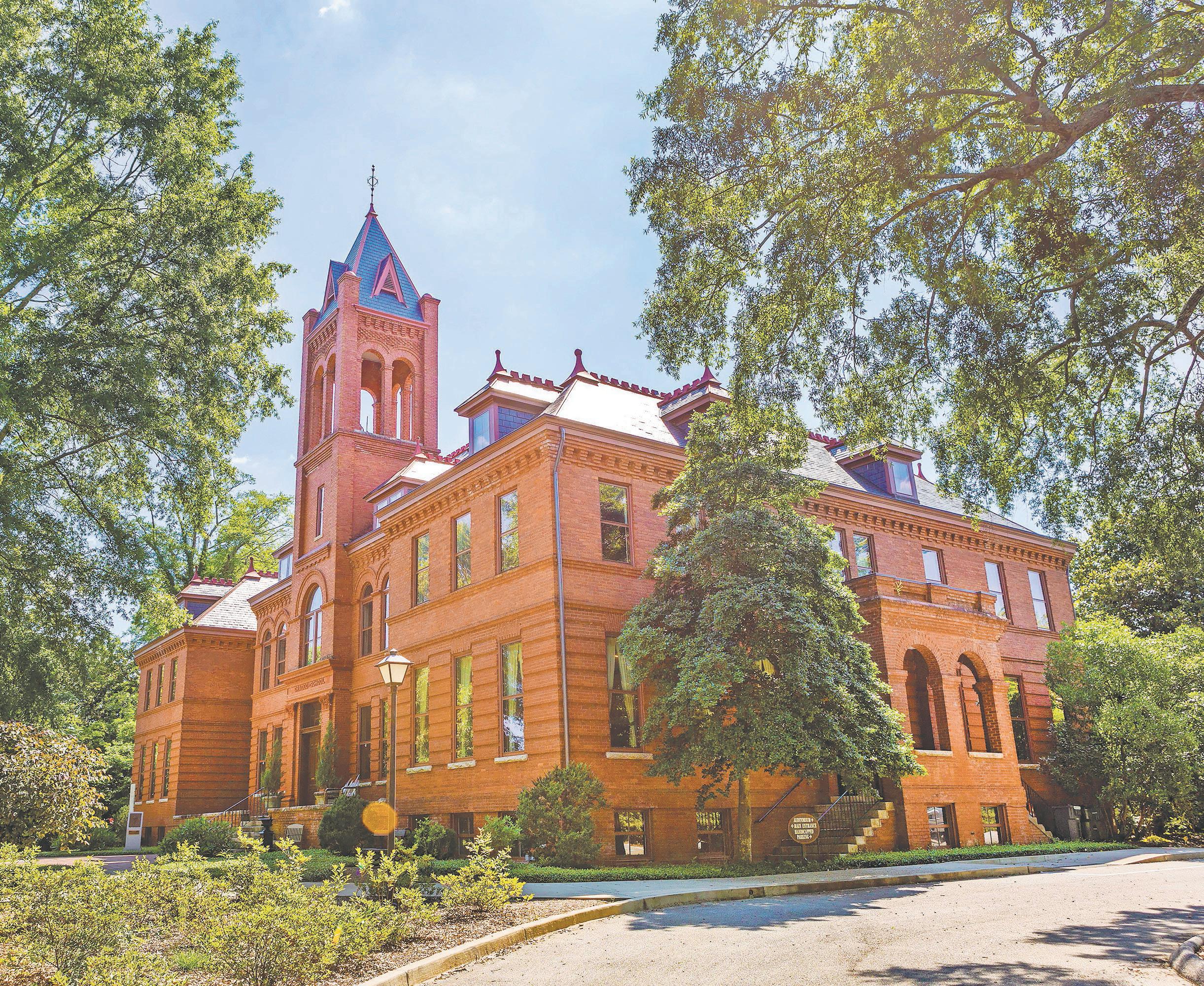
434 South Main Street
TMadison-Morgan Cultural Center Circa 1895 434 South Main Street
he Madison-Morgan Cultural Center is a multi-disciplinary non-profit institution that endeavors to enrich the lives of the residents of its immediate community and the broader region by presenting high-quality programming and educational opportunities in the fields of visual and performing arts, history, and other humanities.
The Romanesque Revival building that hous-
es the Madison-Morgan Cultural Center was constructed in 1895 as one of the first graded public schools in the South. It functioned as a public school until 1957 and then served as the regional library.
Since 1976, the red brick building has been home to the Cultural Center, a thriving arts organization and a venue for the performing and visual arts. It is also a history museum rich with local and regional history exhibits as well as a restored 1893 classroom.
The original brick facade is joined in the middle by an octagonal bell tower which houses the
authentic school bell. Of special interest is the apse-shaped wooded auditorium which offers acoustical excellence for performances, such as those by The Atlanta Symphony Orchestra. Visitors should also note the restored cotton gin located in the Center which is from this area.
The Madison-Morgan Cultural Center is open for visitors Tuesday — Saturday from 10AM — 5PM. To learn more about tickets to upcoming events, visual arts exhibits and other programming, please visit www.mmcc-arts.org or call (706) 432-4743. You can also support the MMCC by becoming a Friend of the Center or donating.



